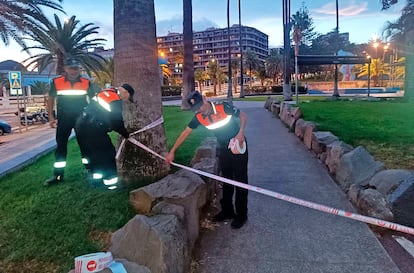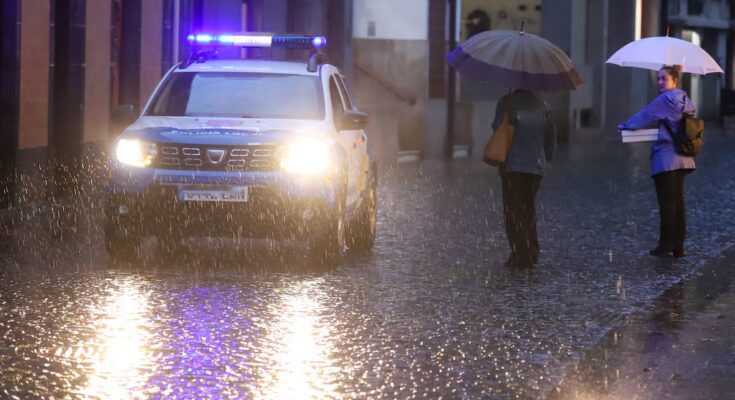The storm Claudia It caused, in the early hours of this Thursday, 120 accidents reported to the islands’ emergency services, which affected the municipalities of Tenerife and Gran Canaria, and caused rainfall of around 80 liters per square meter to fall in several areas of Gran Canaria. According to the forecast of the Spanish Meteorological Agency (Aemet), Claudia It will continue to affect the archipelago throughout the day, and its extension will also reach half of the western peninsula. It will leave overcast skies, strong gusts of wind and precipitation, which will be particularly strong in Galicia, the west of the Central System and the Cantabrian Mountains, western Andalusia and Extremadura. Fifteen autonomous communities are under orange and yellow warnings. The orange ones are already active in the Canary Islands, Asturias and Cantabria and this afternoon they will also be activated in Andalusia, Castilla y León and Extremadura. Over the rest of the Peninsula, cloudy skies are expected, but without rain.
In the Canary Islands, according to 112, strong wind and rain were recorded between 10 p.m. on Wednesday and at 6am today they caused accidents in San Cristóbal de La Laguna, Icod de Los Vinos and Arona, in Tenerife, and in Mogán, San Bartolomé de Tirajana and Agüimes, in Gran Canaria.
Emergency services were called to respond to situations linked to landslides on roads, sewer overflows and water discharges into homes, as well as other incidents on power lines. Furthermore, five roads in Gran Canaria are closed due to landslides.
The front associated with the storm now extends over Lanzarote and Fuerteventura, where Puertos del Estado has decided, as a preventative measure, to close the ports of Arrecife (until 2pm) and Puerto del Rosario (until 6pm).
On these islands, at the moment, there has been only one injury due to one of the recorded accidents: a woman was hit by a sheet of metal detached by the wind in León and Castillo streets in Arrecife, according to the Lanzarote Island Emergency Consortium. At about six in the morning, the storm hurled more than 200 lightning bolts into the sea off the west coast of the island.

During the night, precipitation moved across Gran Canaria, especially in the southern center and in the higher areas.
During Wednesday, Claudia they discharged more than 100 liters of water per square meter in various places in La Palma, such as Roque de los Muchachos and El Paso, according to data published by the State Meteorological Agency. Outside of La Palma, the heaviest rainfall occurred in Tenerife, particularly in the Cañadas del Teide.
The storm is also accompanied by strong winds, which exceeded 100 kilometers per hour in La Gomera and Tenerife on Wednesday. Wind gusts in El Hierro also approached these speeds, particularly in Sabinosa, in the north of the island.
The Aemet recommends caution and attention when climbing ravines and some floods, as well as when falling branches and objects in high places.



